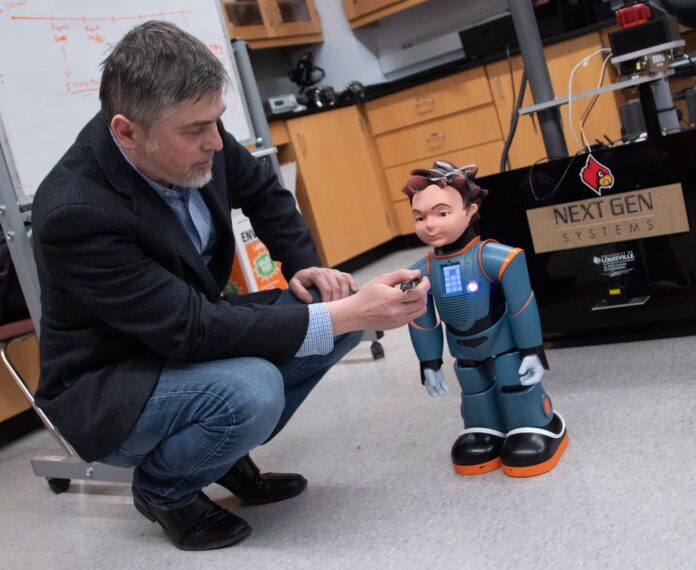
The Louisville Automation and Robotics Research Institute (LARRI) has opened a 10,000-square-foot space dedicated to research, education and collaboration in automation and robotics on the University of Louisville campus.
Launched in 2020, LARRI is the only robotics research center in Kentucky. The institute is a collaboration of researchers and students working to provide solutions for manufacturing, health care and logistics challenges.
“LARRI is moving from a virtual institute to a physical institute facility,” said Dan Popa, director of LARRI and professor of electrical and computer engineering in UofL’s J.B. Speed School of Engineering. “This facility will provide space for collaborative ventures among students, faculty and community and industry partners and will help our faculty take advantage of nationally competitive funding opportunities and new cross-disciplinary educational programs.”
LARRI’s 12 dedicated faculty members, postdoctoral staff, affiliated faculty and more than 50 student researchers are investigating human-robot interaction, automation and robotics for industry, networked robots and autonomous vehicles, planning and control for mechatronic systems and other areas.
“In a state with so many innovative manufacturing businesses and in a city that is a leader in health care innovation, LARRI is a vitally important collaborative and research resource,” said UofL President Neeli Bendapudi. “And for our students, LARRI provides an opportunity to learn and practice with the emerging technologies that will allow them be leaders in engineering innovation.”
“LARRI was formed to conduct state-of-the-art research in robotics and automation and help meet regional and national workforce needs in these technology areas,” said Speed School Dean Emmanuel Collins. “This new facility enables LARRI to expand its research footprint and provides more collaborative space for its researchers. This center already is excelling and we expect its progress to accelerate with the addition of this new space.”
Several key research projects at LARRI focus on health care, including interactive robots to help individuals on the autism spectrum, a specialized chair to improve function in children with spinal cord injuries and an automated nursing assistant.
“The theme is not robots replacing humans. It is humans and robots working together,” Popa said. “Humans do certain things; robots do other things. ARNA, the nursing assistant robot, will not replace nursing staff, but perform helpful basic tasks to alleviate overwork and stress and improve patient care.”
LARRI’s new space, made possible by the estate of Shih-Chung Chen, is located in the J.B. Speed School Innovation Center on Arthur Street, next to the Engineering Garage, a creative makerspace and workshop where students can explore, build and test their ideas, and around the corner from General Electric’s FirstBuild, a similar makerspace.
LARRI already has hosted the robotics competition team from NASA’s Jet Propulsion Laboratory (JPL) during the Defense Advanced Research Projects Agency competition in the new space. The JPL team used the space as a base of operations for testing and preparation for the competition and demonstrated their robots for LARRI faculty, students and staff.





























